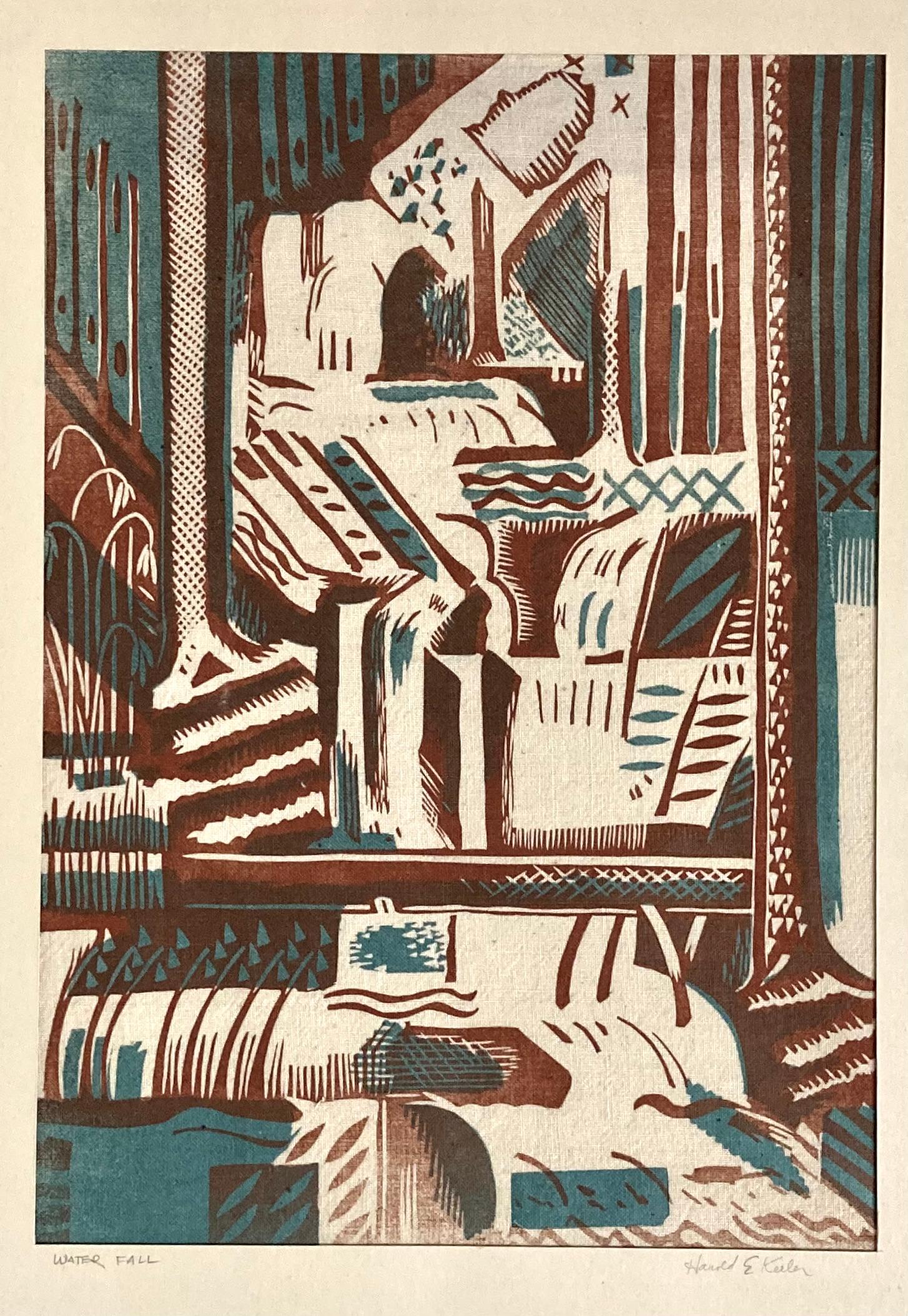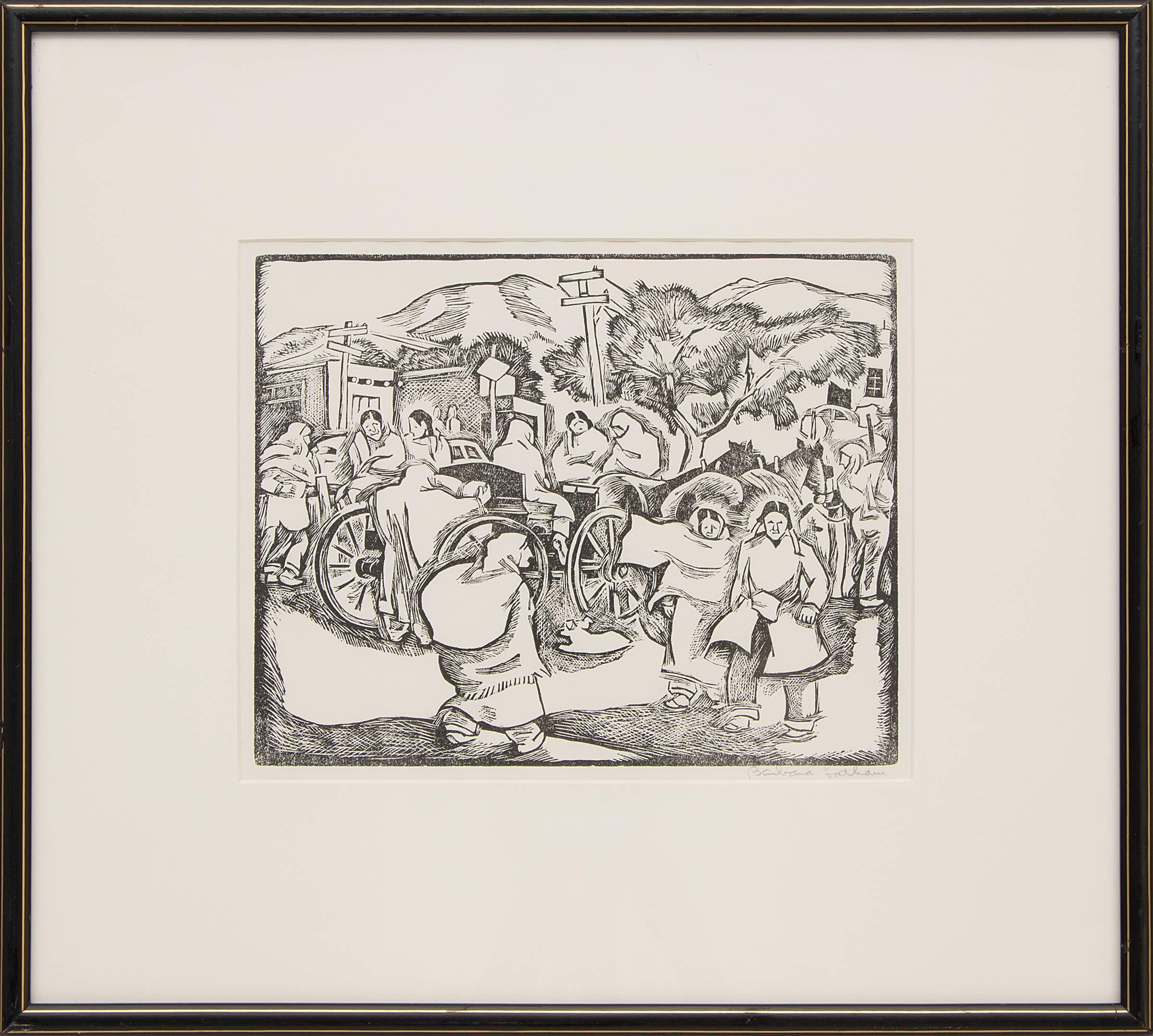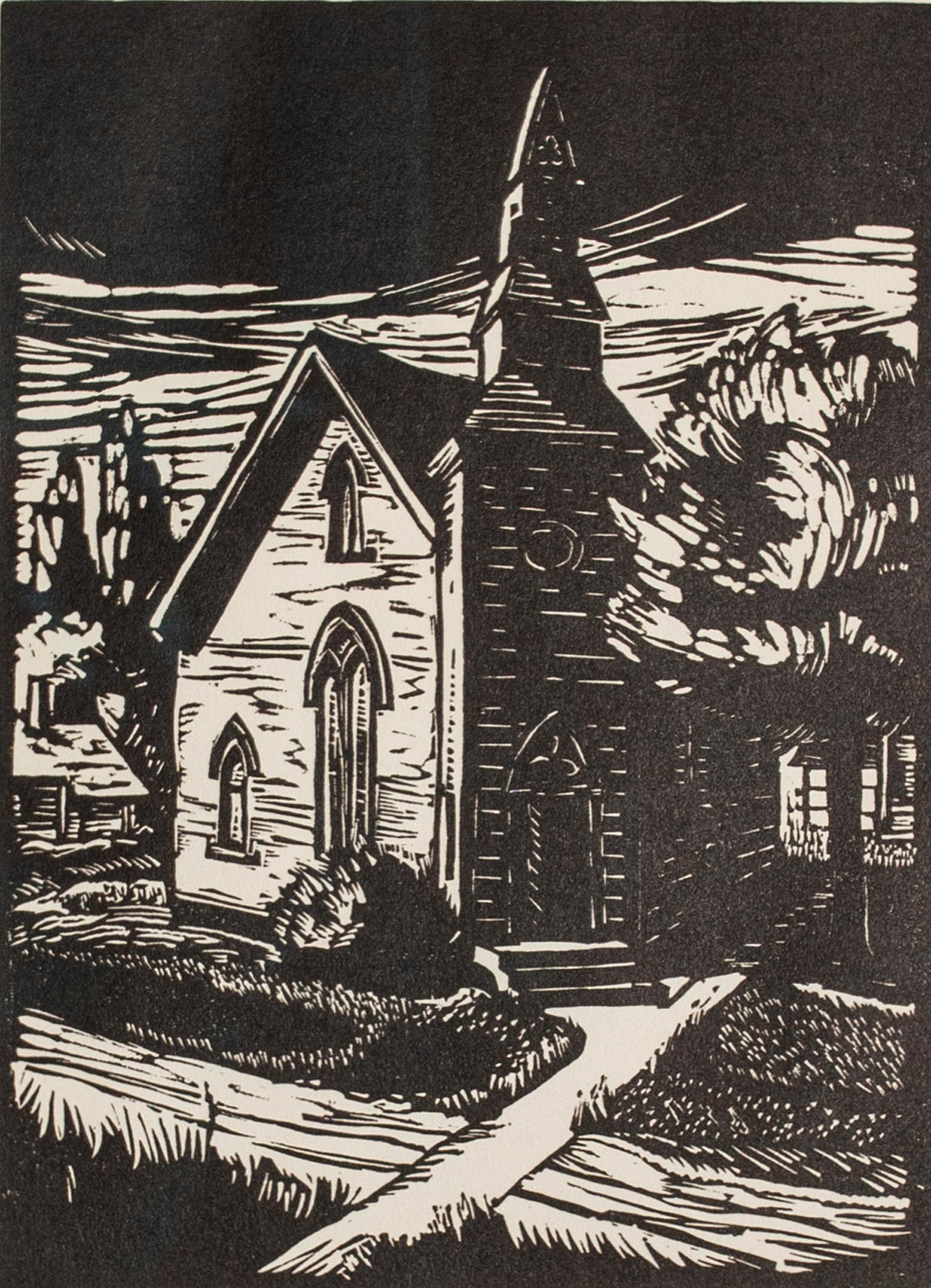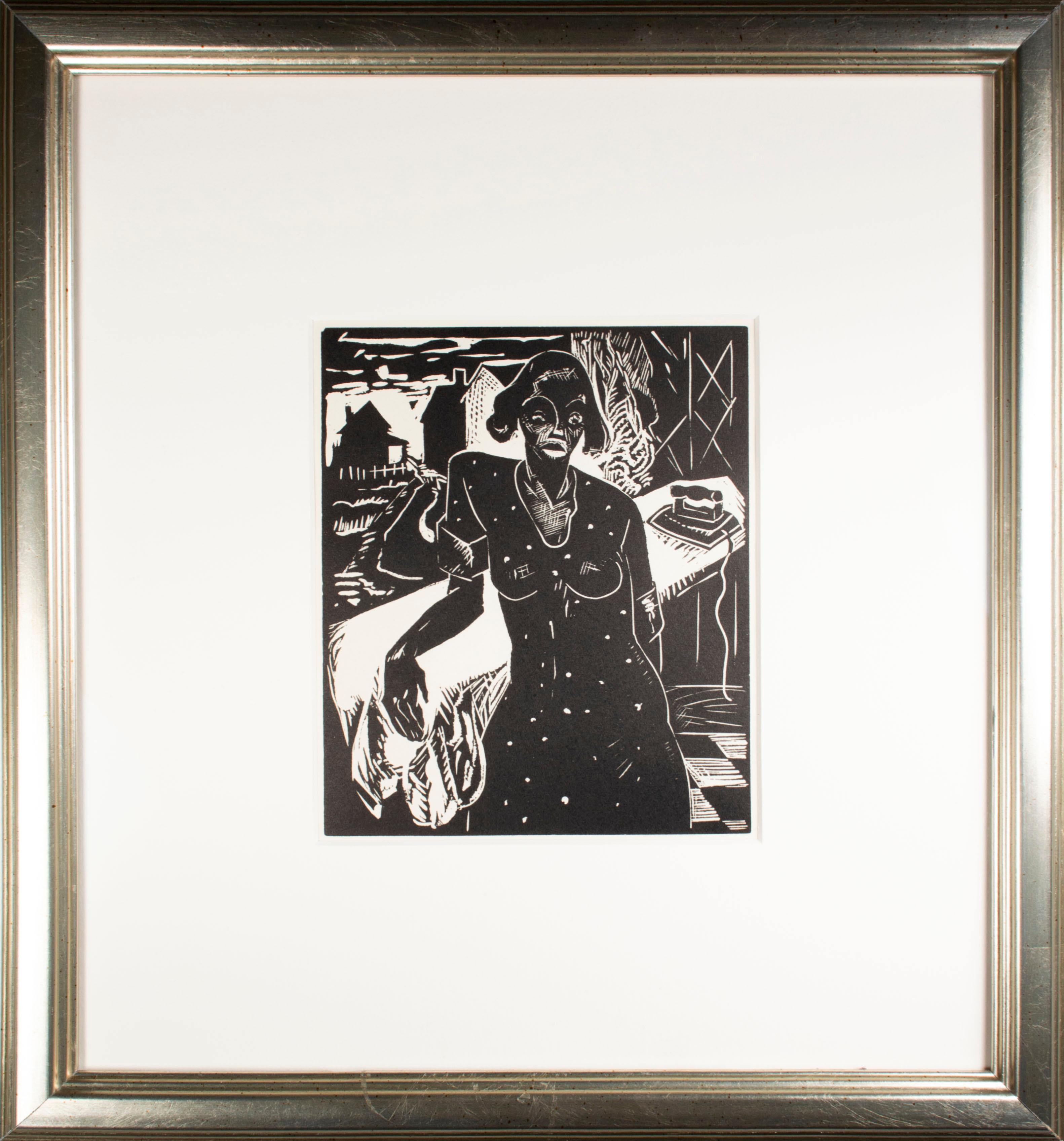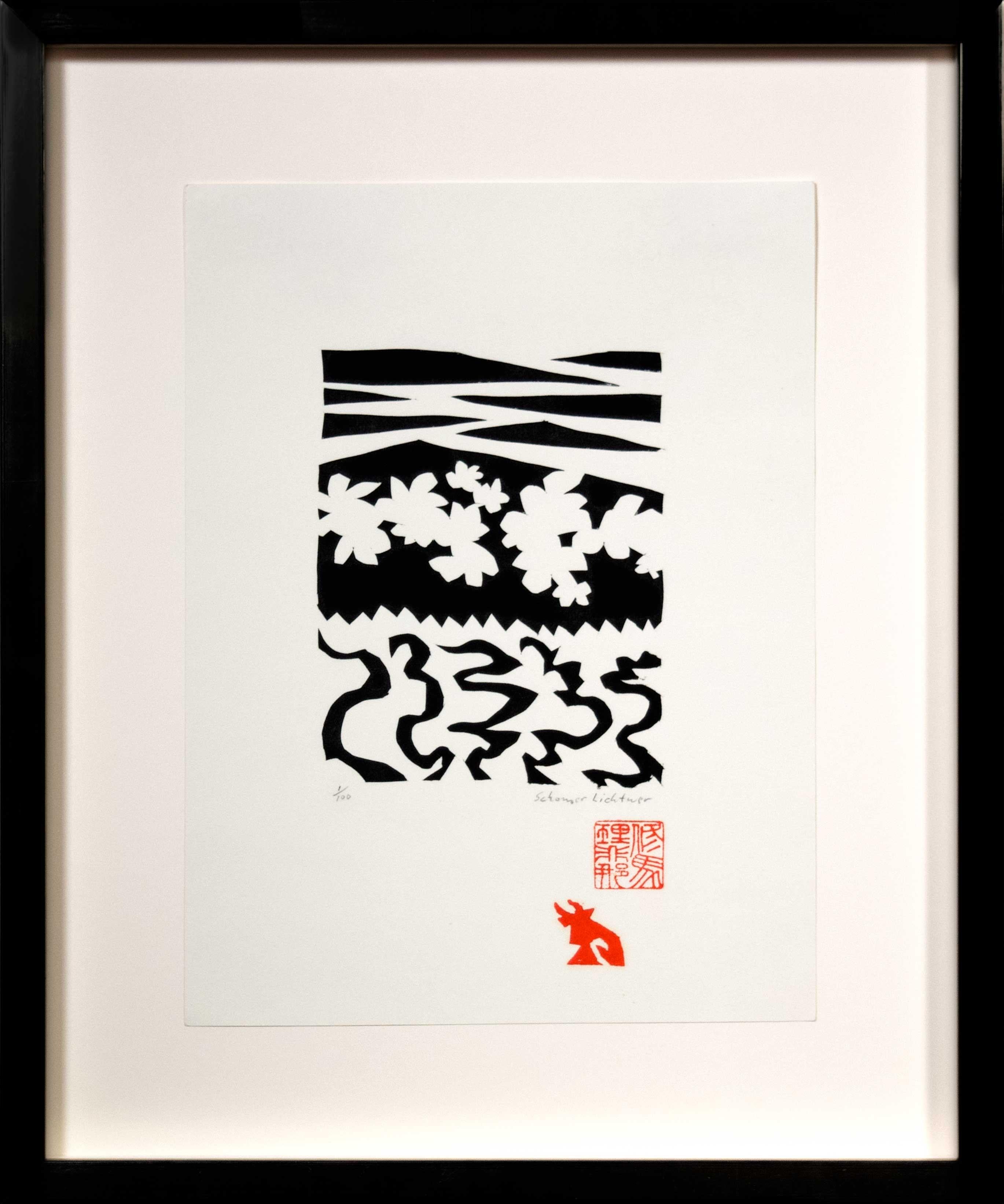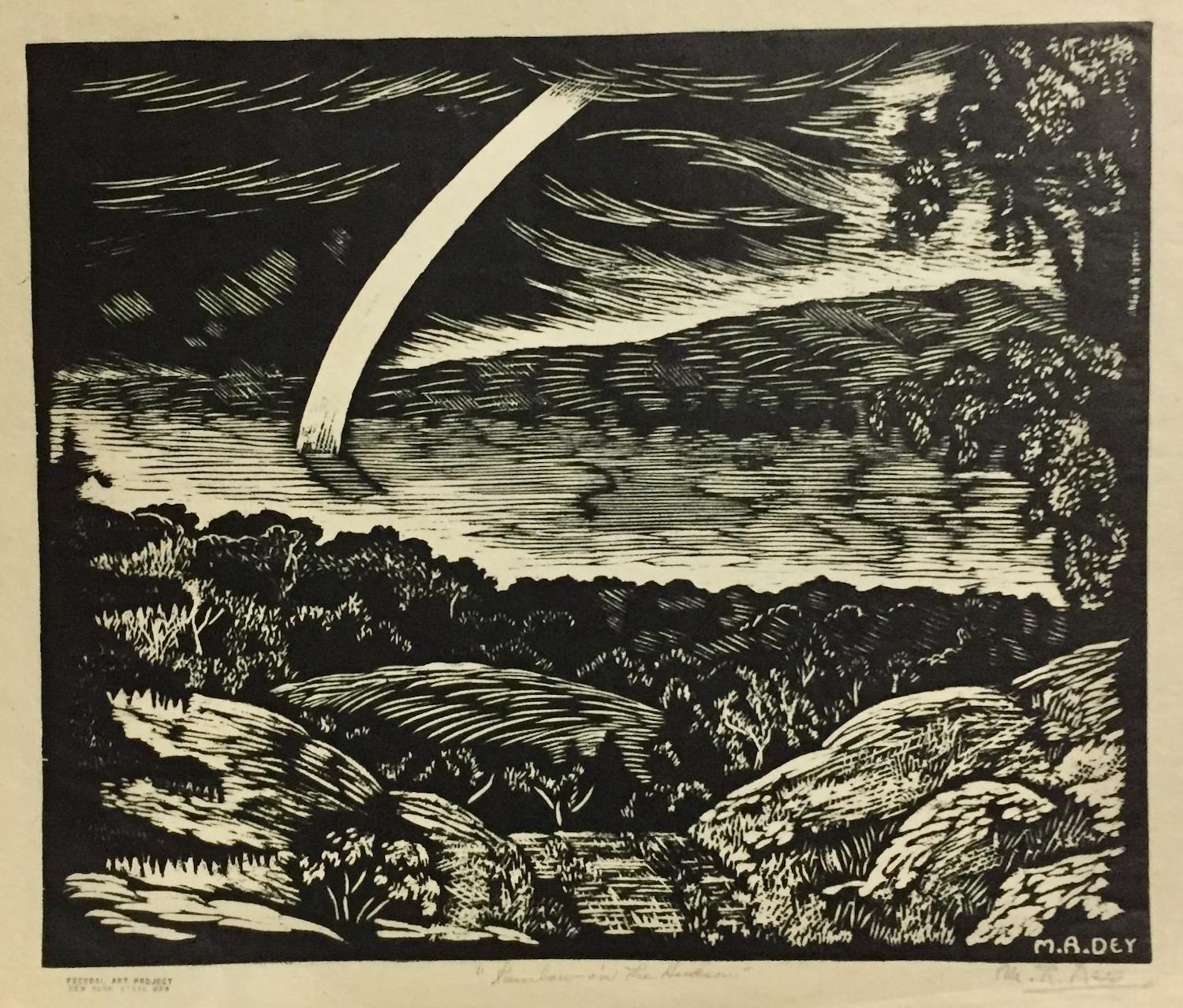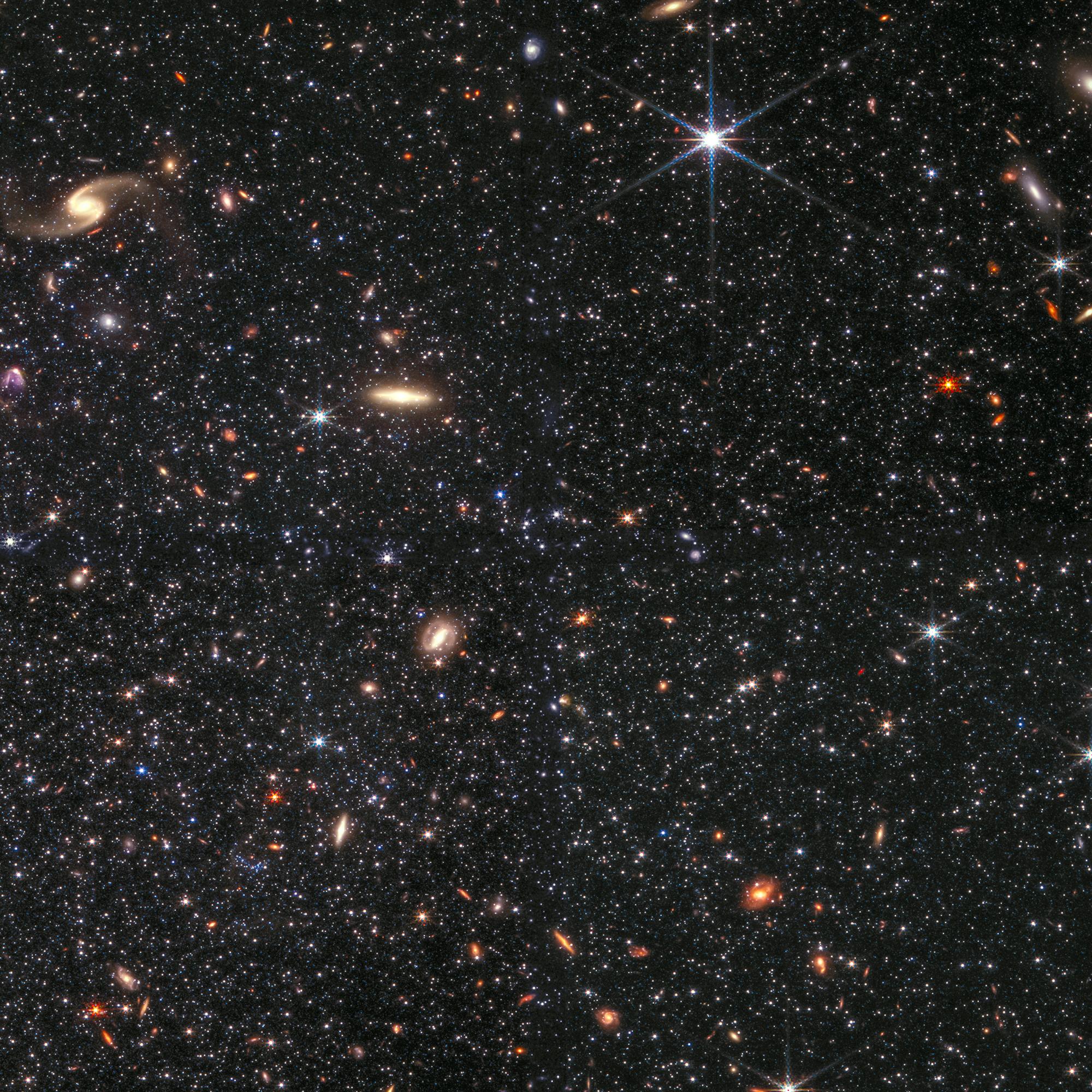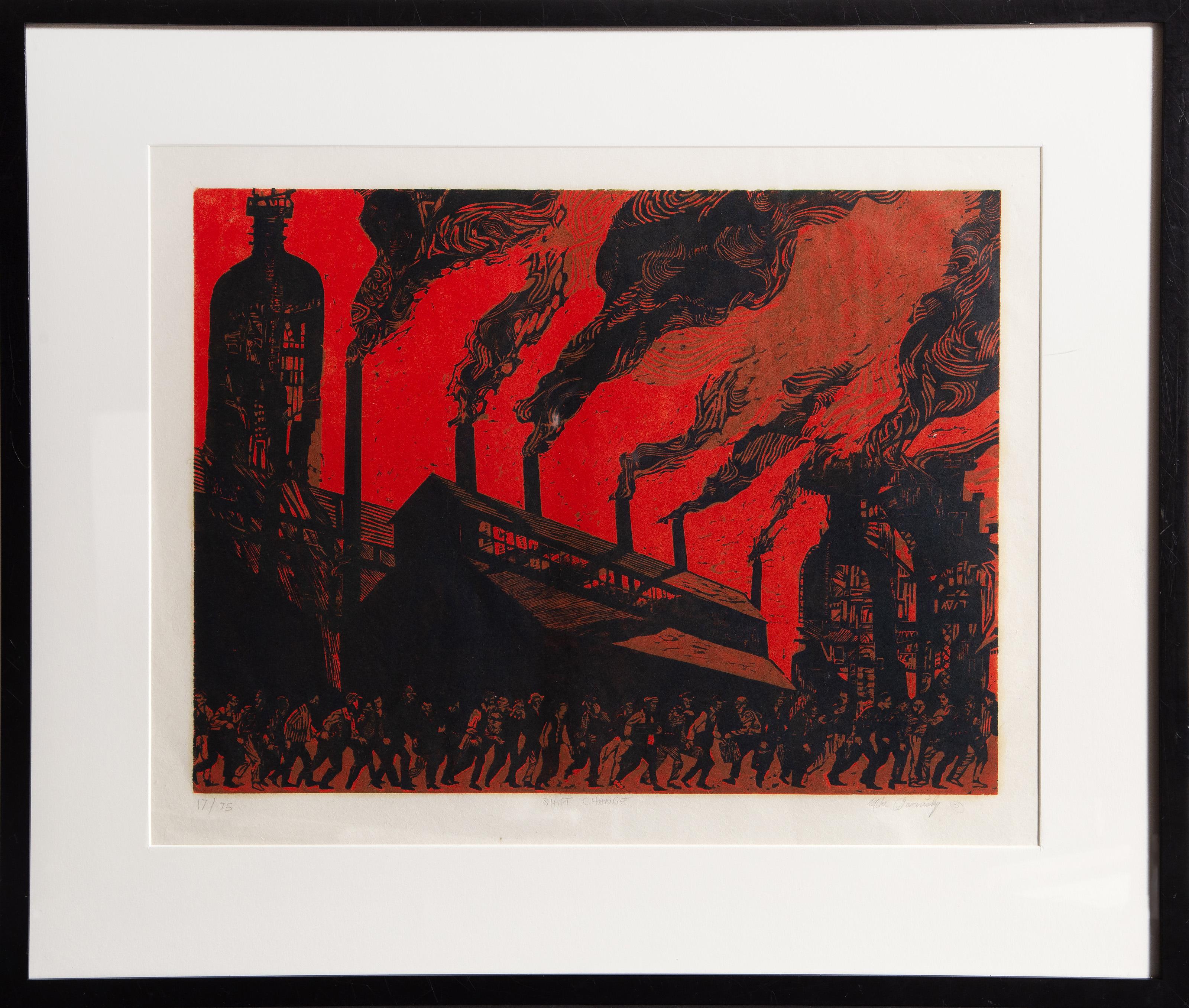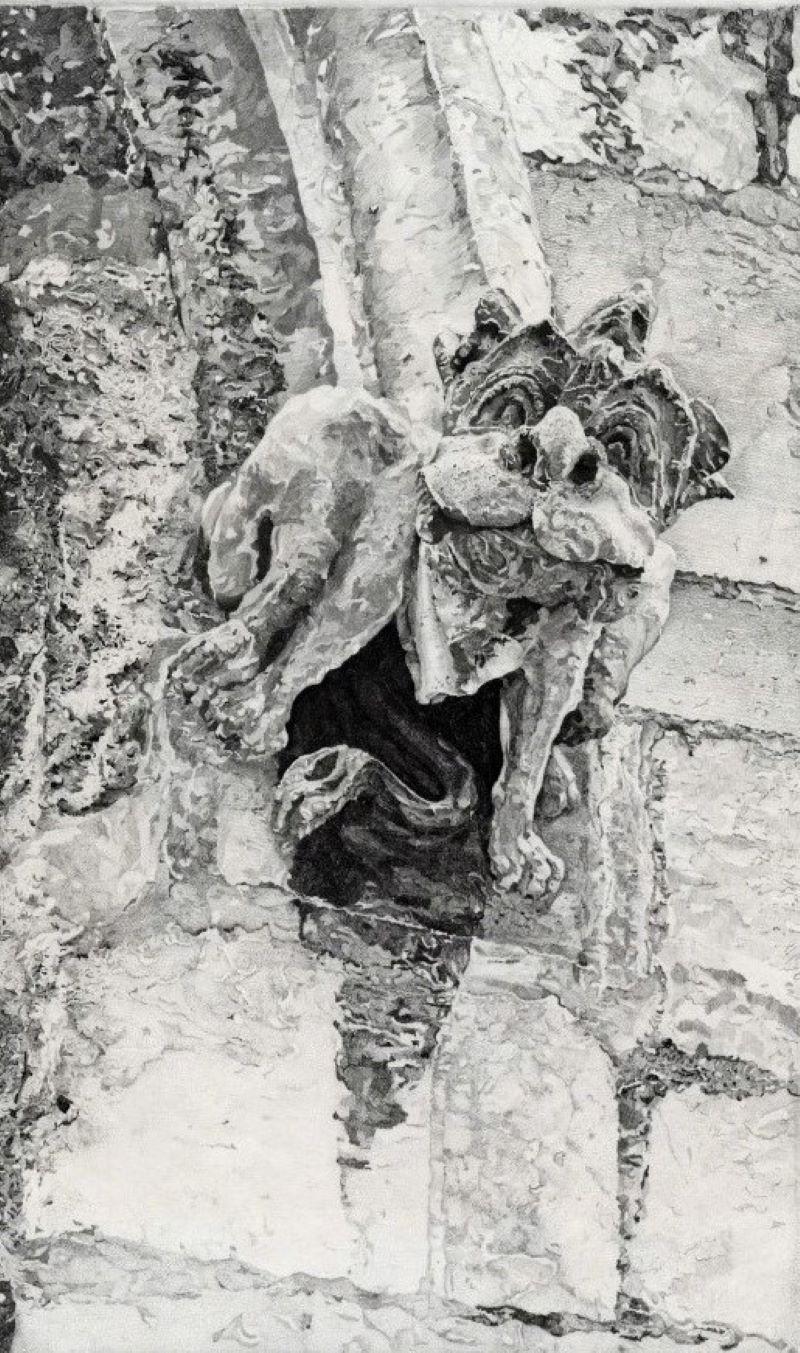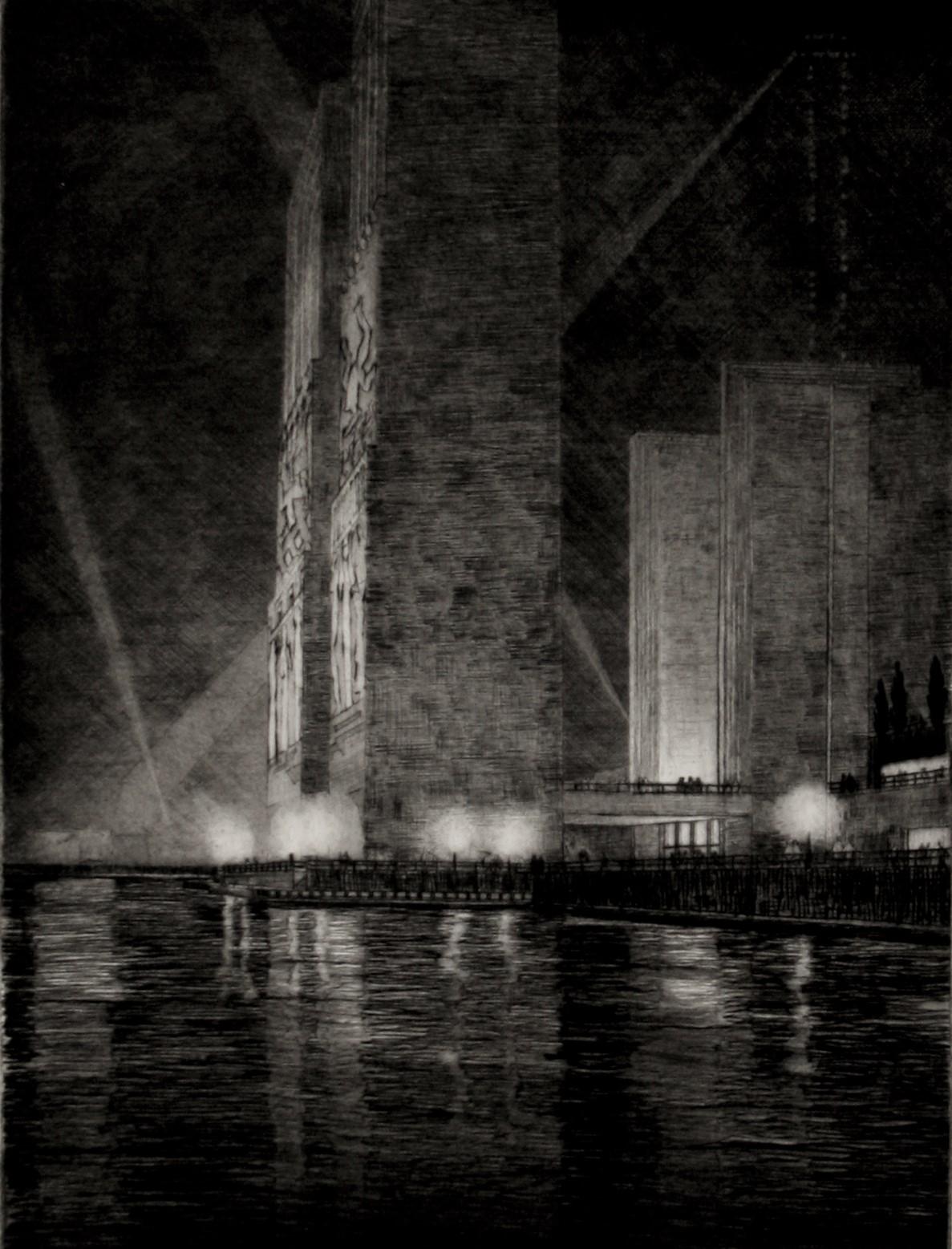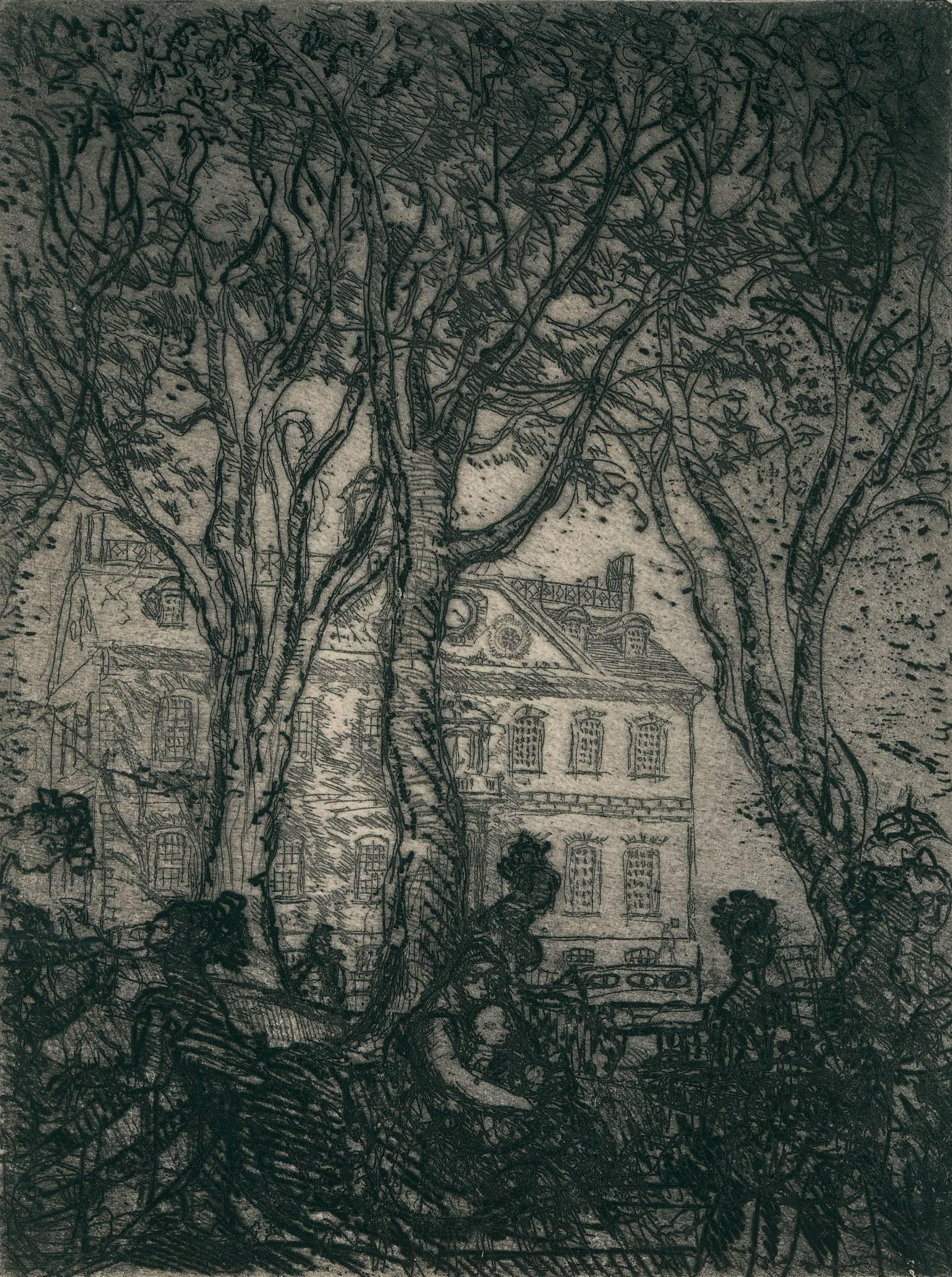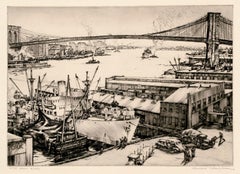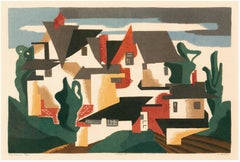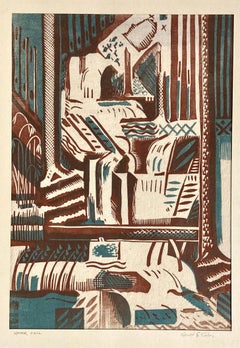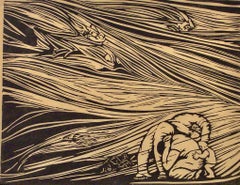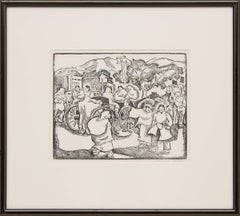
Washington Arch
View Similar Items
Want more images or videos?
Request additional images or videos from the seller
1 of 2
Leon DoliceWashington Archc. 1937
c. 1937
About the Item
- Creator:Leon Dolice (1892 - 1960, American, Austrian)
- Creation Year:c. 1937
- Dimensions:Height: 3.5 in (8.89 cm)Width: 5.5 in (13.97 cm)
- Medium:
- Movement & Style:
- Period:
- Condition:
- Gallery Location:Myrtle Beach, SC
- Reference Number:Seller: 1032581stDibs: LU53233934392
About the Seller
5.0
Recognized Seller
These prestigious sellers are industry leaders and represent the highest echelon for item quality and design.
Platinum Seller
These expertly vetted sellers are 1stDibs' most experienced sellers and are rated highest by our customers.
Established in 1995
1stDibs seller since 2016
254 sales on 1stDibs
Typical response time: 2 hours
Associations
International Fine Print Dealers Association
More From This SellerView All
- 'Pulitzer Fountain, Evening" — 1940s American Modernism, New York CityBy Ellison HooverLocated in Myrtle Beach, SCEllison Hoover, 'Pulitzer Fountain, Evening', lithograph, circa 1940, edition c. 40. Signed in pencil. A fine, atmospheric impression, on cream wove paper; the full sheet with margin...Category
Mid-20th Century American Modern Landscape Prints
MaterialsLithograph
$1,760 Sale Price20% Off - 'The East River', Brooklyn Bridge — Mid-Century Realism, New York CityBy Lawrence WilburLocated in Myrtle Beach, SCLawrence Nelson Wilbur (1897-1988), 'The East River', drypoint, edition 65, 1946. Signed, titled, and annotated 'A. Jones Proof 1946' in pencil. Signed and dated in the plate, lower ...Category
1940s American Modern Landscape Prints
MaterialsDrypoint
- 'The French Farm' — Mid-Century ModernismBy Edward August LandonLocated in Myrtle Beach, SCEdward Landon, 'The French Farm', color serigraph, 1942, Ryan 86. Signed, titled, and annotated 'Edition 50' in pencil. A superb impression, with fresh colors, on cream, wove paper; ...Category
Mid-20th Century American Modern Landscape Prints
MaterialsScreen
- 'Mountain Trees' — 1930s Southwestern RegionalismLocated in Myrtle Beach, SCBertha Landers, 'Mountain Trees', etching and drypoint, c. 1938, edition not stated but small. Signed and titled in pencil. A fine, richly-inked impres...Category
1930s American Modern Landscape Prints
MaterialsEtching, Drypoint
- 'Downtown, New York' — 1920s ModernismBy John Taylor ArmsLocated in Myrtle Beach, SCJohn Taylor Arms, 'Downtown, New York', etching with aquatint, 1921, edition 75, Fletcher 108. Signed, dated, and numbered 14/75 in pencil. A superb, finely nuanced impression, in d...Category
Early 20th Century American Modern Landscape Prints
MaterialsEtching
- 'Navajo Courtship Dance' — 1940s Southwest RegionalismBy Ira MoskowitzLocated in Myrtle Beach, SCIra Moskowitz, 'Navajo Courtship Dance (Squaw Dance)', lithograph, 1946, edition 30, Czestochowski 161. Signed and titled in pencil. Signed and dated in the stone, lower left. A fine, richly-inked impression, on cream wove paper; the full sheet with margins (7/16 to 2 3/4 inches). Pale mat line, otherwise in excellent condition. Matted to museum standards, unframed. Image size 11 13/16 x 14 13/16 inches (300 x 376 mm); sheet size 13 1/16 x 20 1/8 inches (332 x 511 mm). ABOUT THE ARTIST Ira Moskowitz was born in Galicia, Poland, in 1912, emigrating with his family to New York in 1927. He enrolled at the Art Student's League and studied there from 1928-31. In 1935, Moskowitz traveled to Paris and then lived until 1937 in what is now Israel. He returned to the United States in 1938 to marry artist Anna Barry in New York. The couple soon visited Taos and Santa Fe in New Mexico, returning for extended periods until 1944, when they moved there permanently, staying until 1949. During this especially productive New Mexico period, Moskowitz received a Guggenheim fellowship. His work was inspired by the New Mexico landscape and the state’s three cultures (American Southwest, Native American, and Mexican). He focused on Pueblo and Navajo life, producing an extensive oeuvre of authentic American Indian imagery. He and Anna also visited and sketched across the border in Old Mexico. While in the Southwest, Moskowitz flourished as a printmaker while continuing to produce oils and watercolors. Over 100 of Moskowitz’s works depicting Native American ceremonies were used to illustrate the book American Indian Ceremonial Dances by John Collier, Crown Publishers, New York, 1972. After leaving the Southwest, printmaking remained an essential medium for the artist while his focus changed to subject matter celebrating Judaic religious life and customs. These works were well received early on, and Moskowitz was content to stay with them the rest of his life. From 1963 until 1966, Moskowitz lived in Paris, returning to New York City in 1967, where he made his permanent home until he died in 2001. Shortly before his death, Zaplin-Lampert Gallery of Santa Fe staged an exhibition of the artist's works, December 2000 - January 2001. Other one-person shows included the 8th Street Playhouse, New York, 1934; Houston Museum, 1941; and the San Antonio Museum, 1941. The artist’s work was included in exhibitions at the Art Students League, Art Institute of Chicago, Philadelphia Print Club, College Art Association (promotes excellence in scholarship and teaching), and the International Exhibition of Graphic Arts (shown at MOMA, 1955). Moskowitz’s lithographs of...Category
1940s American Modern Landscape Prints
MaterialsLithograph
You May Also Like
- Harold E. Keeler, Water FallLocated in New York, NYHarold E. Keeler worked in Hollywood as a set designer. That seems especially important here because the Water Fall looks a little as though it could be a woodland stage set -- to me...Category
1930s American Modern Landscape Prints
MaterialsLinocut
- Evelyn G. Schultz, TyphoonLocated in New York, NYThe only mention I can find of Evelyn G. Schultz is that she was a charter member of the San Diego Watercolor Society. But the medium of the linocut (here on tan paper) was frequentl...Category
1940s American Modern Figurative Prints
MaterialsLinocut
- Saturday Morning (Market, Taos Plaza, New Mexico), 1950s Figural Linocut PrintBy Barbara LathamLocated in Denver, CO1950s modernist linoleum cut print titled 'Saturday Morning (Market, Taos Plaza, New Mexico) by New Mexican artist Barbara Latham. Depicting a busy Saturday morning at the market in Taos Pueblo with horse and cart, Native American figures, adobe buildings and mountains in the background. Presented in a custom frame with all archival materials, outer dimensions measure 16 x 17 ¾ inches. Image size is 8 ½ x 10 ½ inches. About the Artist: Beginning her career as a commercial artist, Barbara Latham travelled to Taos in 1925 seeking material for a greeting card. Serendipitously, she also found her life partner, Howard Cook, who was similarly looking for ideas for illustrations. Perhaps both were fueled in their quest by the tales of their mutual teacher, Andrew Dasburg, who knew of the energy and stimulation of this artist community. Observing local people and customs, Latham created genre scenes that offer a window into this now-vanished time and place. Her lively illustrations for numerous children's books are a significant contribution to that graphic art in the mid-20th century. Born in Walpole, Massachusetts, Latham's student days included Norwich Art School and Pratt Institute in Brooklyn; but it was contact with the charismatic Dasburg at the Art Students League in Woodstock that opened her world and her view of art. Getting work with companies like Norcross Publishing and Forum magazine, she eventually made her way to Taos. Among all the spirited young artists gathered there, she met Howard Cook, who was designing illustrations for Willa Cather's Death Comes to the Archbishop. The two married in Santa Fe and began a nomadic life together. The young couple made their way to Paris, a likely destination for modernist artists. Upon receiving a Guggenheim to study fresco painting in 1932, Cook, along with Latham, took an alternative direction and headed to Taxco, Mexico. At this time, Mexican muralists, such as Diego Rivera, were capturing the attention of progressive artists. During the Depression, both Cook and Latham aligned themselves with a populist ideal. Latham contributed work, such as "Fording the Stream" and "Bear Family," to the American Artists Group, which was founded to produce original prints at affordable prices. The couple also travelled in the Deep South to the Ozarks and to "Alabama's Black Belt." When Latham settled in Taos, she was committed to an art of and for the people. Rather than a romanticized re-creation, her choice of subjects was based in common everyday activities, favoring those which brought people together. Taos Pueblo was an ancient, indigenous community, and Latham's view extended that tradition into a contemporary, multi-ethnic village. Sharing some of the spirit of WPA photographs...Category
Mid-20th Century American Modern Figurative Prints
MaterialsLinocut
- "Country Church, " Town Landscape Linoleum Cut by Elsa E. UlbrichtLocated in Milwaukee, WI"Country Church" is an original linoleum print by Elsa E. Ulbricht. A front facing view of a country church is proudly replicated within this print. Image:7" x 5" Framed: 15.25" x 13.25" Painter, Teacher When she directed The Milwaukee Handicraft Project, Elsa Ulbricht...Category
1930s American Modern Landscape Prints
MaterialsLinocut
- 'Monday in Wick Haven' original linoleum cut print by Howard ThomasBy Howard ThomasLocated in Milwaukee, WIIn this image, Howard Thomas presents the viewer with a domestic interior. The image is dominated by the figure of a black woman, resting her arm on an ironing board. To the right, the tool of her task dangles a chord above a checker tiled floor. Beyond, though a window, neighboring homes fill the landscape. The careful line-work of the linocut adds a sense of expressionism to the scene, but the image nonetheless falls into the Social Realism that captivated most American artists during the Great Depression. This print was published in 1936 as part of the Wisconsin Artists' Calendar for the year 1937, which included 52 original, hand-made prints – one for each week of the year. 6 x 5 inches, image 10 x 7.13 inches, sheet 12.37 x 12.43 inches, frame Entitled "Monday in Wick Haven" lower left (covered by matting) Inscribed "Linoleum Cut" lower center (covered by matting) Artist name "Howard Thomas" lower right (covered by matting) Framed to conservation standards using 100 percent rag matting and museum glass, all housed in a silver gilded moulding. Quaker-born in Ohio, Thomas trained in the Midwest at Ohio State University and the Chicago Art Institute. He taught in the Art Department of the Milwaukee State Teachers College (now University of Wisconsin-Milwaukee) where he became good friends with Carl Holty, Edward Boerner, Robert von Neumann...Category
1930s American Modern Figurative Prints
MaterialsEngraving, Linocut
- 'Field' original abstract linocut in black by Wisconsin artist Schomer LichtnerBy Schomer LichtnerLocated in Milwaukee, WI'Field' is an original linocut by Wisconsin-based artist Schomer Lichtner. The composition presents fields of flowers, trees and grasses below a cloudy sky, but rendered with Lichtner's quintessential abstract sensibilities. This print is one from a series that each depict abstracted subjects in black silhouette, taking pleasure in the materiality of the linocut technique. The free forms of the plants resemble the lyrical mid-century works of the French artist Henri Matisse, which combined with these material concerns demonstrate Lichter's modern sensibilities. The prints from this series are unusual because of how below the image, Lichtner also includes his Chinese seal and a linocut remarque of a cow, each of which act as an additional signature of the artist on the artwork. Linocut in black and red on Permalife white wove paper 4.5 x 6 inches, image 11.5 x 8.75 inches, sheet 16.5 x 13.63 inches, frame Signed in pencil, below image, lower right. Edition 1/100 in pencil, below image, lower left. Chinese signature stamp in red, below image, lower right. Remaque of a cow in red, below image, lower right. Permalife watermark to paper. Framed to conservation standards in a shadow-box style mounting, using 100 percent rag matting, museum glass, and housed in a silver-finish wood moulding. Overall excellent condition with no creases or discoloration. Milwaukee artist Schomer Lichtner was well known for his whimsical cows and ballerinas and abstract imagery. He and his late wife Ruth Grotenrath, both well-known Wisconsin artists, began their prolific careers as muralists for WPA projects, primarily post offices. Lichtner also painted murals for industry and private clients. Schomer was a printmaker and produced block prints, lithographs, and serigraph prints. His casein (paint made from dairy products) and acrylic paintings are of the rural Wisconsin landscape and farm animals. He became interested in cows when he and Ruth spent summers near Holy Hill in Washington County. According to David Gordon, director of the Milwaukee Art Museum, Schomer Lichtner had a tremendous joie de vivre and expressed it in his art. Schomer Lichtner was nationally known for his whimsical paintings and sculptures of black- and white-patterned Holstein cows...Category
Late 20th Century American Modern Landscape Prints
MaterialsBlack and White, Paper, Linocut
